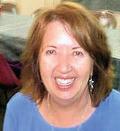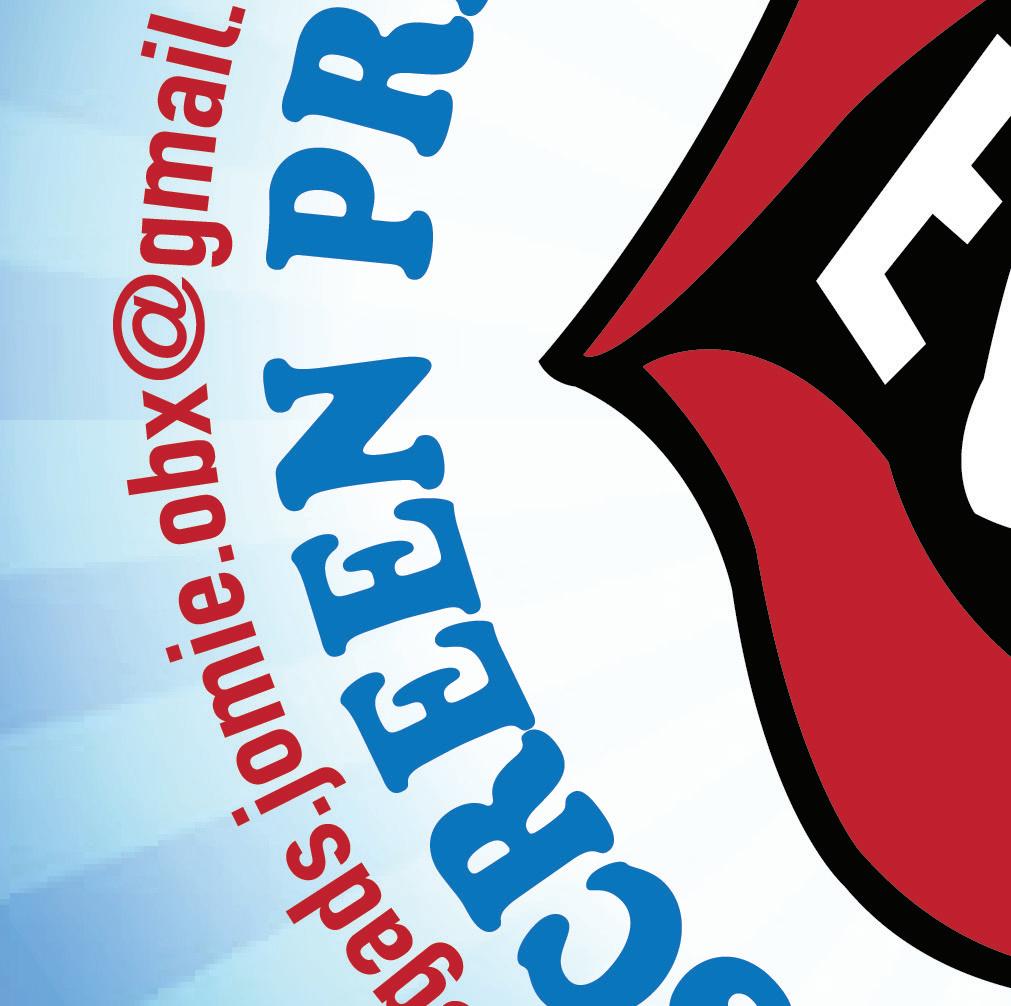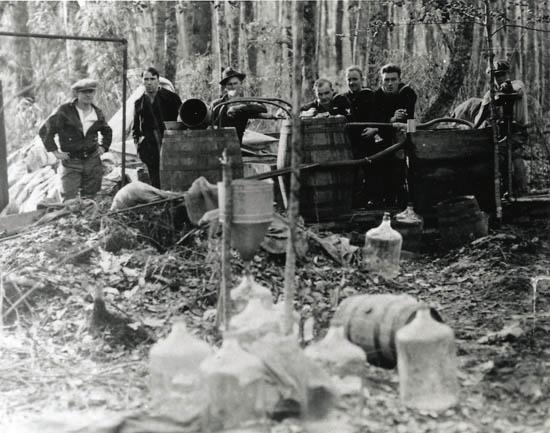




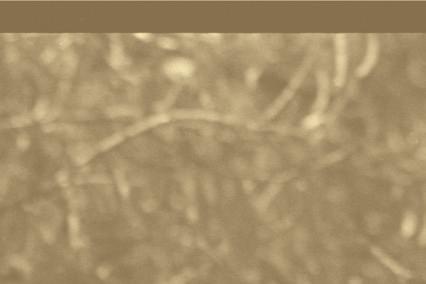































































































































The Albemarle represents a unique place— half land, half water. The story of this place comes alive in Our Story, a tale of how our communities have adapted to the challenges and opportunities of our unusual home.
Virtual tour provides in-depth overview of the region and its progression through various eras of transportation.
The official State Historical Boat of North Carolina was fi rst built in the early 1880s by George Washington Creef, of Roanoke Island. The shad boat on display here at MOA was constructed in 1904 by renowned boatbuilder and decoy carver Alvirah Wright.
River Bridge: Sunken Secrets
Excavations at a site along the Pasquotank River have yielded more than 10,000 artifacts, dating from the middle of the 18th century to the early 20th century.
Your Obedient Servant: James Monroe’s 1819 Presidential Tour of the Southern States (closes 9/30/19)
Traveling exhibit, consisting of retractable banners from the James Monroe Museum in Fredericksburg, Va. concerning his southern tour, recognizes the bicentennial of the 1819 tour and takes place in conjunction with Virginia’s American Evolution 1619-2019 Commemoration.
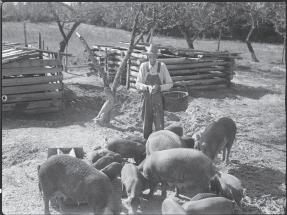
Hogs have found their way into our lives and culture, playing a significant role for families in northeastern North Carolina. Th is exhibit will look at how pigs have become a part of our family, home, and livelihood.
A ousand Words: Photographs by Vietnam Veterans (opens 11/8/19)
Th is collection of images, on loan from NC Museum of History, assembled by photographer Martin Tucker, was taken by North Carolina soldiers in Vietnam.
Temperance and Bootlegging: A Nation Under Prohibition (opens 1/17/20)
The 18th Amendment banned the production, sale, importation, exportation, and transportation of alcoholic beverages and had a lasting effect on our area. Th is lobby exhibit includes an actual still that was confi scated in a moonshine raid, as well as informational panels and images.
State of North Carolina
Roy A. Cooper, Governor
Daniel J. Forest, Lieutenant Governor
Department of Natural and Cultural Resources
Susi H. Hamilton, Secretary
Office of Archives and History
Kevin Cherry, Deputy Secretary
Division of State History Museums
North Carolina Museum of History
Kenneth B. Howard, Director
The Museum of the Albemarle is a part of the Division of State History Museums.
FRIENDS OF THE MUSEUM OF THE ALBEMARLE BOARD OF DIRECTORS
Dr. Benjamin Speller, Jr., President
Nancy Bailey Muller, Vice President
Mathew Scribner, Treasurer Millie Griffith, Secretary
Dr. John Hill, Marjorie Berry, Johnson Biggs, Capt. Lamar VanBrackle, Barbara Snowden, Jason Phelps, Kim Castle, Reba Green-Holley, Charles Reed, Jinger Hickman, Harrie� Hornthal, Dr. Melissa Stuckey, Will Norrell, Whitney Young, Penny Leary-Smith, Russ Haddad, Hayley James, Linda Hofler, Dianne Daniels
Don Pendergra�, Ex-Officio
Barbara Putnam, Ex-Officio
MUSEUM OF THE ALBEMARLE STAFF
Don Pendergra�, Director of Regional Museums
Barbara Putnam, Opera�ons Manager
Wayne Mathews, Facili�es Manager
Wanda Lassiter, Curator
Charlo�e Pa�erson, Educa�on Curator
Marjorie Berry, Public Informa�on Specialist
Samuel Buck, Security Guard/Event Rental Assistant
Rosana Cas�lho, Event Rental Coordinator
Jessica Cosmas, Collec�ons Specialist
Ma� Ferrell, Carpenter
Diana Cox, Educator Assistant
Lori Meads, Museum Educator
Andrew Nelson Redondo, Exhibit Designer
Megan Paz, Public Informa�on Specialist
Lyne�e Sawyer, Museum Specialist/AV Technician
William Seymore, Facili�es Maintenance
Ben Shipley, Facili�es Maintenance
Rebecca S�les, Administra�ve Assistant
Mary Temple, Museum Gi� Shop
Bruce Topping, Security Guard/Event Rental Assistant
Paul Vincent, Collec�ons Assistant
The Gateway
Stephen Evans, Copyeditor
Andrew M. Nelson Redondo, Graphic Designer
Contributors
Jessica Cosmas, Kameron Iriarte, Charles R. Knight, Wanda Lassiter, Lori Meads, Tara Morrison, Charlo�e Pa�erson, Don Pendergra�, Barbara Putnam, Dr. Benjamin F. Speller
The Gateway is published two �mes per year by the Friends of the Museum of the Albemarle. Published ar�cles do not necessarily represent the views of the Department of Natural and Cultural Resources or any other state agency.
Unless noted otherwise, images used are courtesy of the Museum of the Albemarle.
© 2019 by the Museum of the Albemarle
For informa�on on making a contribu�on to the Friends of the Museum of the Albemarle or to sponsor an issue of The Gateway, call 252-335-1453.

501 South Water Street, Elizabeth City, NC 27909 252-335-1453 • museumofthealbemarle.com facebook.com/museumoftheablemarle • Free admission
Museum Hours
Monday–Saturday, 9 a.m.–5 p.m.
Museum Gift Shop
Monday–Saturday, 10 a.m.–5 p.m.

Welcome to the new school year, a bountiful harvest season, and the approaching holidays—and to new exhibits and programs, brought to you by museum staff members, who have been busy all summer working to update things and surprise you with changes.
This fall, for example, we will open High on the Hog, a new exhibit that celebrates North Carolina’s love of pork and our region’s heritage of raising hogs. The exhibit will open on Saturday, September 28, in conjunction with FOMOA’s annual membership meeting, with an old-fashioned pig-picking and all the trimmings. After all, what would a social gathering be without a homemade Pig-Pickin’ Cake or banana pudding? Both will be served at the annual meeting. The celebration will be held on the J. Wilson Jones Jr. Festival Portico and Stage and will continue inside with a ribbon-cutting ceremony and a guest speaker, Marlowe Ivey Vaughan, executive director of Feed the Dialogue NC. I’d like to encourage you to attend and to bring your families. Just call and make reservations, so we make sure you have a place at the table.
If you haven’t seen Look Again: Discovering Historical Photographs, it will remain on display through Saturday, October 5. The exhibit is a survey of unusual period photographs from across the state, part of research files from the North Carolina Museum of History collection. The photos are exhibited with a collection of early cameras from our MOA collection, which includes William Zoeller’s box camera and studio sign. Zoeller operated a studio in Elizabeth City from 1892 into the 1930s; he primarily used glass-plate technology.
On Friday, November 8, we will open A Thousand Words: Photographs by Vietnam Veterans, an exhibit that features a sampling of photographs taken by North Carolina troops and some of their memories about those photos. On a a side note, the museum will also serve as a host site for Ghostwalk this year, taking you back in time to World War II and a top-secret mission named “Project Zebra.”
In early 2020 MOA will mark the 100-year anniversary of Prohibition by opening an exhibit that assembles a display about making and transporting illegal spirits, aka moonshine, hooch, stump-juice, or white lighting! As we are in the researchand-development phase, let us know if you’d like to contribute with information, photographs, or artifacts that help tell our story.
I’d like to thank our volunteers, members, and the Friends of the Museum of the Albemarle for your work and support throughout the year. The museum depends on your help—and has from its beginning days. The people and the state of North Carolina are grateful for and appreciative of your service to educating visitors and passing cultural traditions on to our younger generations. Please know that you are the people who “make history happen.”
We invite you to visit the museum to see new and old exhibits, attend a program, or enjoy one of the many events we’re hosting. Welcome back!
11



The 18th Amendment banned production, sale, importation, exportation, and transportation of alcoholic beverages in the United States. Ratified by the Volstead Act in January 1920, this legislation had a lasting effect on rural areas such as northeastern North Carolina and southeastern Virginia. Image the stroke of midnight, where the whole country went dry! What were people’s reactions, thoughts? Was a personal leisure taken by the government? Businesses and people’s lives were changing.
Movements to limit or curb the use of alcohol had begun as early as the 1600s, with religious denominations denouncing the “disorderly” and “immoral” behaviors caused by excessive consumption of alcohol. In the mid-1700s and throughout the 1800s, many temperance groups called for prohibition based on the effects of drinking on the “body and mind,” and perhaps a cause of “society’s evils.” Drinking, as some believed, led to gambling, crime, poverty and other societal problems. Several nineteenth century political campaigns centered around liquor abstinence at a national level.
Locally, North Carolinians passed a prohibition law in 1908—the first southern state to do so. During the years that followed, and during federal Prohibition, illegal activities associated with producing, transporting, and selling alcohol, or moonshine, boomed. Bootlegging between North Carolina and Virginia and South Carolina became a popular, and lucrative, endeavor, as did the operation of “speakeasies” across northeastern North Carolina—and the country as a whole.
NATIONAL PROHIBITION CONVENTION, 1892 Courtesy of the Library of Congress
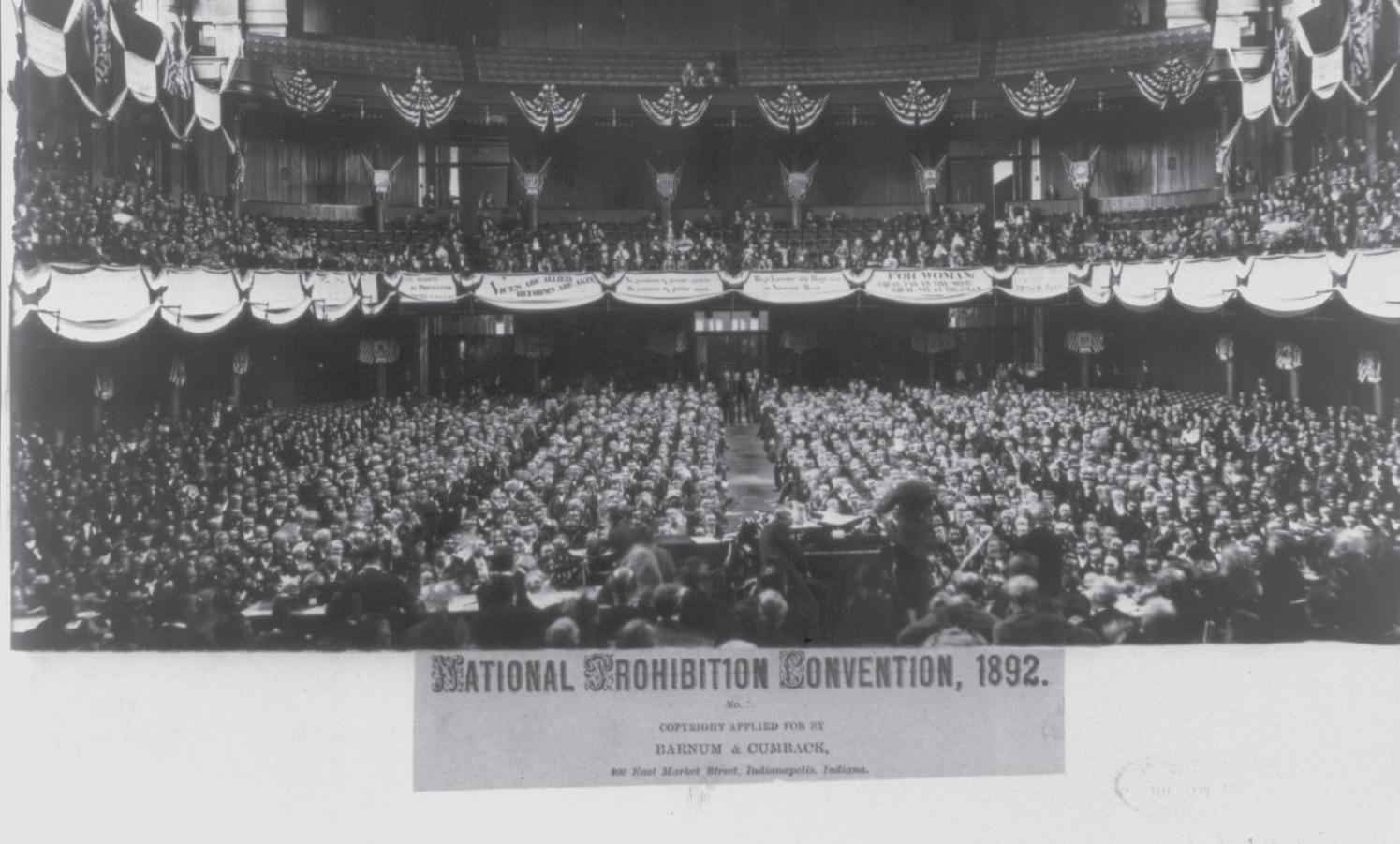
The 21st Amendment, ratified in 1933, ended Prohibition on a federal level, though North Carolina actually voted to not ratify the amendment (the only state to take that action). Prohibition in the state did not “end” until 1937, when a board of Alcohol Beverage Control (ABC) was established and turned decisions about alcohol sales over to counties and municipalities.

Under Prohibtion will open in January 2020 with artifacts and informational panels discussing the federal law’s effects on northeastern North Carolina. Was Prohibition a failure or a success? Would better law enforcement or more funds have made any difference in its impact? Were the loss of tax revenue and jobs part of Prohibition’s demise? Was widespread bootlegging and the opening of speakeasies a consequence? Does a recent ban on the sale of 95 percent pure alcohol in locations except ABC stores mark renewed support for prohibition? What about the outlawing of caffeinated alcoholic beverages? Could a type of prohibition rise again in the 21st century?
Plan to visit early next year and find out.



 by Charles R. Knight, Curator of Military History, North Carolina Museum of History, Raleigh
by Charles R. Knight, Curator of Military History, North Carolina Museum of History, Raleigh
The Vietnam War took place, literally, half a world away from the United States, and life for soldiers serving there was an unknown to most Americans in the 1960s and 1970s. In fact, many only knew the war from images they saw on TV—and some of those were quite graphic.
But what did the war look like to troops on the ground— especially to soldiers from North Carolina? Those with cameras recorded the war: some, the horrors; but others focused less on the war and more on the experience—their friendships, the Vietnamese people, the countryside, the longing for home.
A Thousand Words, a collection of intriguing images assembled by Winston-Salem photographer Martin Tucker, offers visitors the chance to see how soldiers themselves chose to remember their time in Southeast Asia. The exhibit explores some human elements and experiences of Vietnam, and becomes even more personal with commentary by the veterans on what each image meant to them.
“Vietnam was a complex conflict, ushering in a new type of warfare: a war without borders,” says curator Charlie Knight. “When Tucker originally collected these images and the stories that go with them, he provided a glimpse into a very turbulent time period in US history. The images in A Thousand Words convey what everyday life was like for those in uniform in Vietnam, and we hope that visitors will gain a greater understanding of this war 50 years later.”
According to Tucker, “The photographs paint as broad a picture as possible . . . of what 18- to 20-year-old young men experienced in their year away from home (in addition to combat)—and how they chose to document it. They’re showing what they couldn’t say.”
The exhibition also includes a Missing Man Table, to remind visitors of those that did not return home.

This was up close a place called Wonder Beach. The sand was white, just white. The sand reflected the heat, and this was the middle of the day. You see how my dog had his tongue hung out. He was close to passing out. I said, “ I can’t walk him anymore,” so we got on a track vehicle, and it’s got 106 mm Recoilless rifles on it. My dog was one of the first dogs in Vietnam. His name was Mutsu. He would not walk into anything. If it was there, he’d let you know. He was good with personnel. He could find caches of ammo, food, and he was good with mines. The reason I am here today is because of him.
-Joe Anthony U.S. Marine Corps, 1968

The expression “half land, half water” describes the area of northeastern North Carolina. And on that land, hogs have been raised, butchered, and processed for generations. Hogs have found their way into our lives and culture, playing a significant role for families in northeastern North Carolina. Whether a vital source of food and income for regional families or an ingredient in recipes and medicinal and everyday products, hogs are considered cultural icons. The High on the Hog exhibition, which opens September 28th, will look at how pigs have become a part of our family, home, and livelihood.

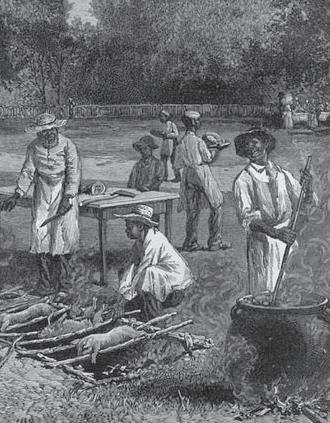
Pig farming has been a vital part of agriculture for many centuries. From large quantities that supported antebellum plantations to lesser numbers for small farms, swine was used as an income supplement and as a major source of food. In the 21st century, few self-sustaining farms exist. Rather farmers are raising great quantities of pigs to sell to large packand slaughterhouses.
Traditionally, butchering and processing as a cultural event, with neighbors helping neighbors and farms being self-sufficient, has died out in the Albemarle region. During the early 1900s, butcher shops and meat markets rose in the region, and later supermarkets with butcher counters could be found. Today, farmers’ markets offer local pork and beef, along with baked goods and seasonal produce.
Pork barbecue has its own category in the exhibit. Slow cooked over an open pit with hardwood coals or at a pig picking, barbecue is considered an icon of the South, maybe a “cultural phenomenon!”
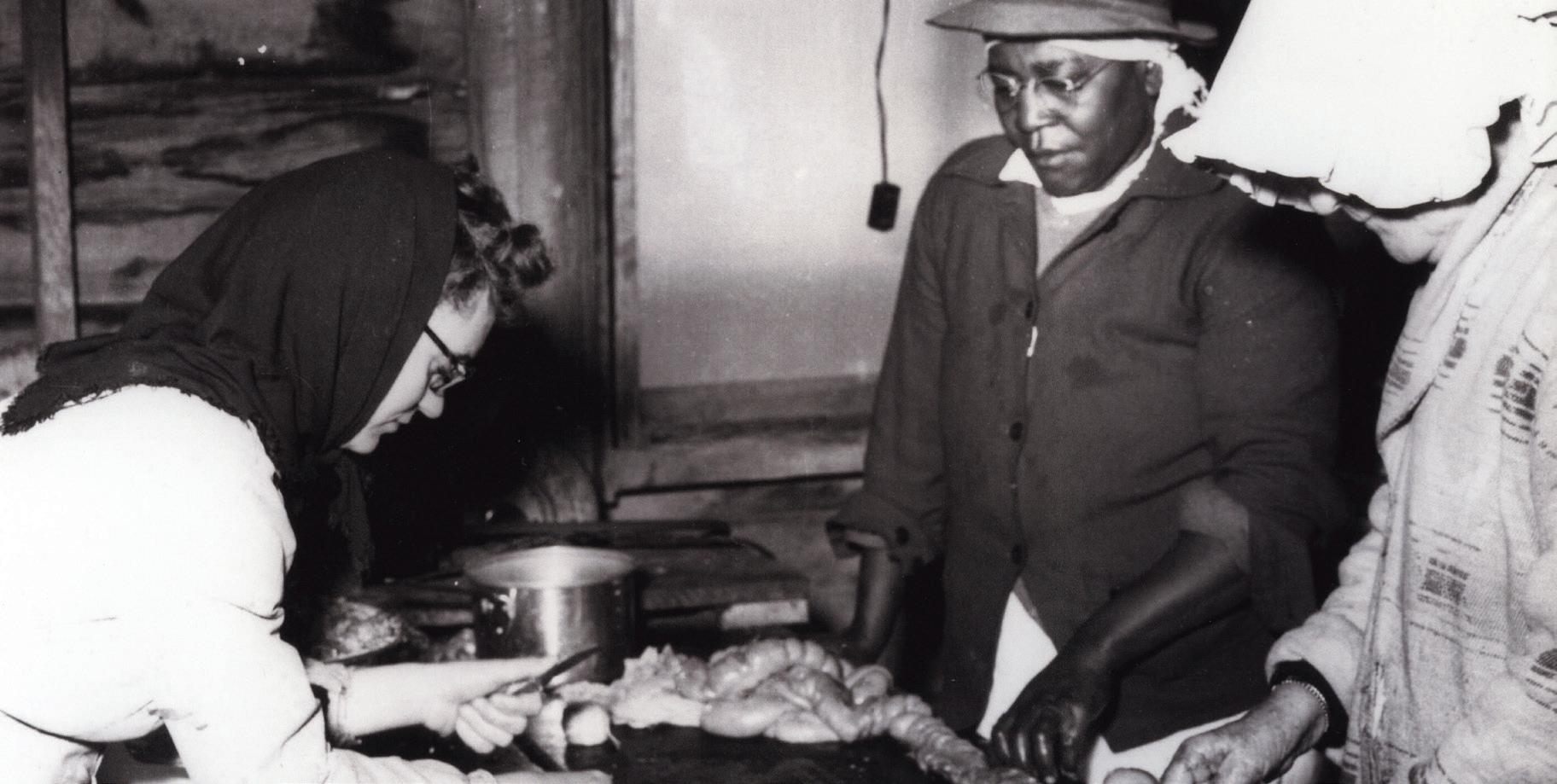
Pigs can also be iconic cultural symbols as piggy banks, school mascots, and artwork. Trophies, ribbons, and cash prizes are awarded for competitions involving pigs. These elements make the pig an important part of Northeastern North Carolina’s livelihood.
HOMEMADE SAUSAGE USING CHITLINS FOR THE CASING.
Hertford County
Courtesy of E. Frank Stephenson Jr.
FEEDER HOGS FOR MARKET, 1941
Chester Morris shown with a group of hogs for market.
Currituck County
Courtesy of the Currituck County Center of the North Carolina Cooperative Extension
FARMER FEEDING HIS HOGS, 1939
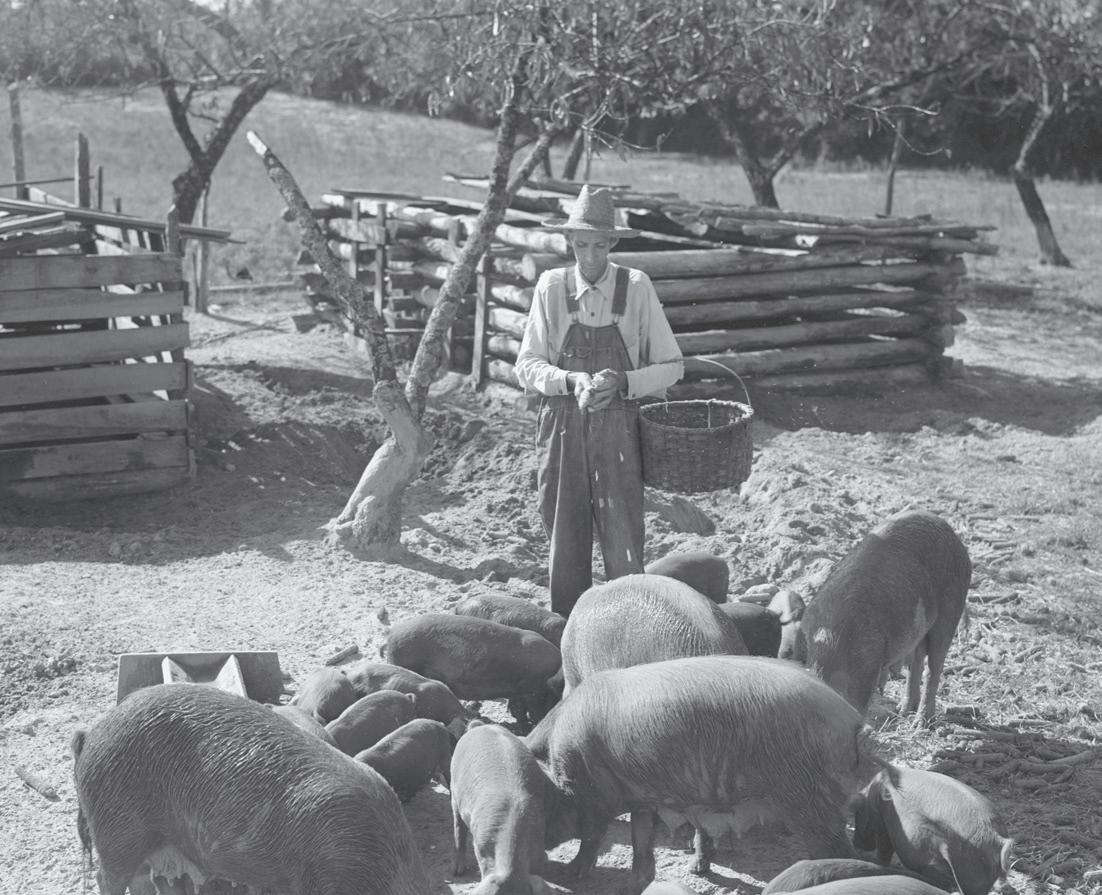
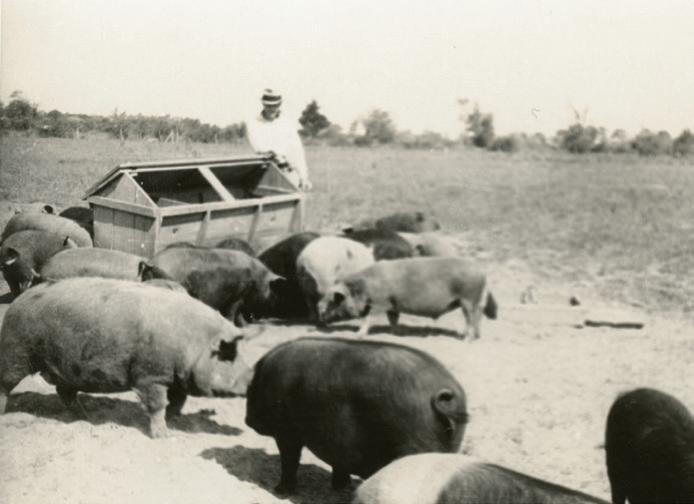
Northampton County

Courtesy of the North Carolina Collection, University of North Carolina at Chapel Hill, Charles Anderson
Farrell Collection
4-H LIVESTOCK SHOW, ca. 1950
A 4-H member showing her pig at a livestock show.
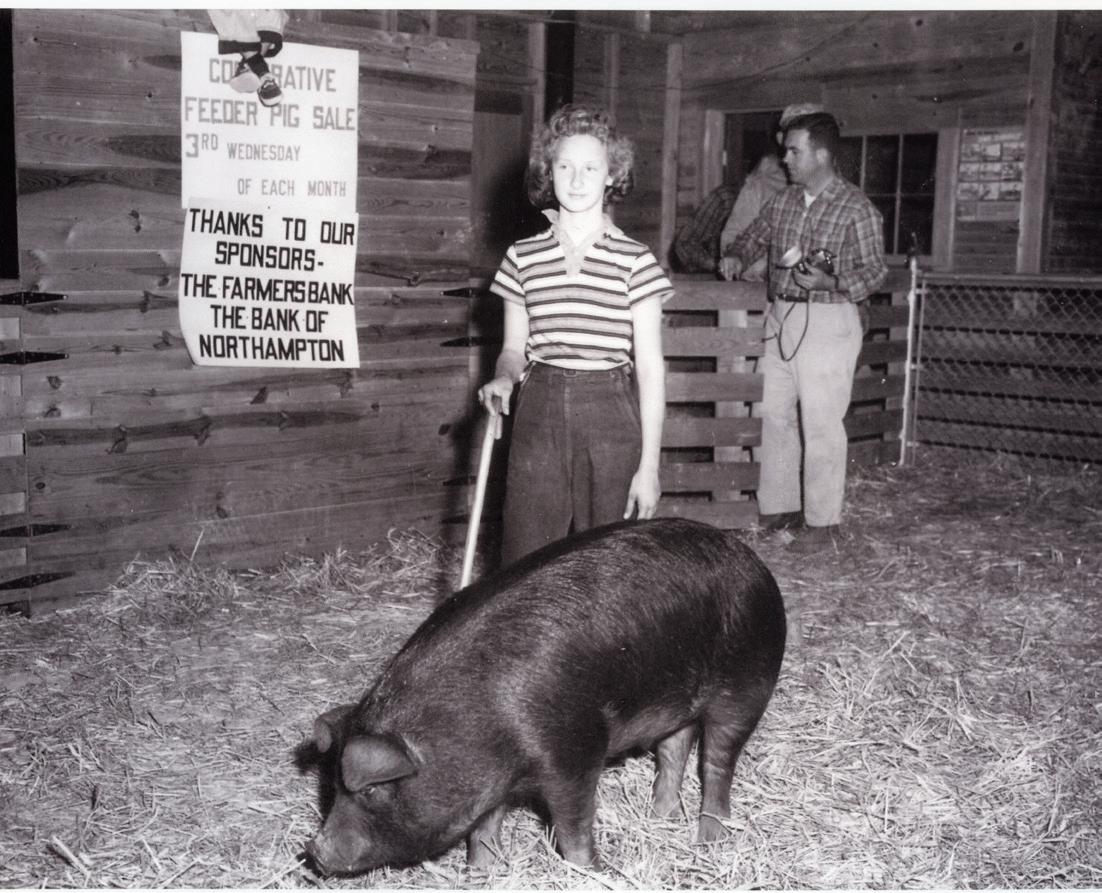
Hertford County
Courtesy of E. Frank Stephenson Jr.
In Museum of the Albemarle’s second floor gallery sits the restored Proctor Smokehouse. The smokehouse was initially located on the Proctor Farm in the Bear Swamp area of Perquimans County, an area often considered to be one of the earliest permanent settlements of people in North Carolina. The smokehouse was eventually moved to the Newbold-White House in Hertford (also in Perquimans County), where it was damaged by a limb that fell on its roof during Hurricane Isabel in 2003; afterward, the building was offered to the museum for exhibit.

The Proctor Smokehouse, built from locally harvested native cypress, was disassembled and transported to a building for fumigation, then moved, reassembled, and restored inside the museum—a process that took more than six months. Preservation work uncovered complex and advanced construction techniques and carpentry skills that had been passed down from generation to generation and revealed that the building might be one of the earliest and oldest surviving examples of the squared-timber
and fully-dovetailed smokehouses once used by early settlers in the state.
Smokehouses were important to people who wanted to have pork available all year long, as most early families in North Carolina did. Settlers preserved and protected meat in smokehouses, which were enclosed, without windows or a

flue. Meat, first packed in tubs of coarse salt for about six weeks to draw most of the moisture from the meat, was hung in smokehouses for one to two weeks while smoke from a low-burning fire smoldered, preserving and flavoring the meat. The result was dried, long-lasting, smokeflavored meat that could hang safely stored from vermin and thieves.
 Circa 1840s, Perquimans County by
Courtesy of Museum of the Albemarle
Courtesy of William Long, 2017
Circa 1840s, Perquimans County by
Courtesy of Museum of the Albemarle
Courtesy of William Long, 2017
As humans, we are all identified by a number, the most common being our Social Security Number. Swine, too, are identified by a number; the system of identifying them is based on either ear notching or ear tagging. Each method provides a way of tracing an animal back to the farm where it is housed.
Ear notching is the oldest form of identification for swine. Notching provides a permanent way of identifying individual animals - and it’s inexpensive. Notching the ears of swine needs to occur within a week of birth.
The notching process is completed by placing notches in the left and right (as viewed from the rear) ears. The right ear has five locations for notches, but is divided into four quadrants; each of the four quadrants has a value (1, 3, 9, 27) and may have one or two notches, with a central notch always identified as 81. These notches are added together to determine the litter number. The left ear is divided into four quadrants with three locations for notches. The assigned number values on this ear are 1, 3, and 9. All notches, based on their locations, are added together to identify the hog’s birth order.
Ear tags are also a common method of identifying swine, especially in large operations. One of two “840 ear tag” systems (visual or electronic) are utilized by many farms. The number on each tag is fifteen digits long, with 840 (the numerical code for the US) being the first three and the other 12 being unique to an animal. The tag is placed in a hog’s ear, much like an ear piercing.
The next time you see a sounder of swine, check out their ears and see that they are providing you with their identification.

Museum of the Albemarle’s exhibition High on the Hog explores the numerous ways hogs have rooted their way into our collective mind and body throughout history.
Hogs have made many culinary contributions to our culture. Alongside crispy bacon and mouth-watering
barbecue stands, gelatin. This slimy substance is derived from boiling down what remains after a hog is butchered into popular cuts of pork, such as tenderloin or Boston shoulder or Boston Butt.
Gelatin helps stabilize fluffy confections like marshmallows! Beyond the campfire staple s’mores, marshmallows are used to make Swiss Rolls or frothy meringues, as
seen on the artifact pictured here—this metal and glass box from the 1920s once held marshmallows, white puffs that could be snacked on or whipped into a new dessert.
It and other items with unexpected connections to hogs will be on display until 2022.
 CRACKER JACK CO. MARSHMALLOW BOX, ca. 1925
CRACKER JACK CO. MARSHMALLOW BOX, ca. 1925
Pork is the meat most eaten in the world. In fact, the United States is the third-largest consumer and producer of pork and its products. Over 26 billion pounds of pork were produced by meat companies in the United States in 2017. Surveys confirm that the average American annually consumes about 50 pounds of pork. Sausage, pork chops, bacon, fatback, and barbecue are all foods derived from the pig.

Hogs are extremely important in the field of medicine as a source of over 20 prominent drugs such as insulin,
amoxicillin, penicillin, and heparin. Hog skins that have been specially treated aid in human flesh burns. And pig heart valves have been used to replace human heart valves.
The ingredients listing of your favorite foods can tell you if that food has a pork ingredient. Look for terms such as monoglycerides, enzymes, diglycerides, collagen, and keratin. Some pet foods are also made from rendered pig products. Gelatin and collagen from pigs are used for products such as pudding, yogurt, gummy candy, ice cream, marshmallows, and safety gloves.
Also look for swine skin in shoes and clothing. Paintbrushes can be found made of pig hair. Ground bones can be used to make paper, jigsaw puzzles, and bullets. Lotions, antifreeze, crayons, toothpaste, and makeup are among those items made from pig fat and organs.
FARMER AND SWINE, 1941

Currituck County

Courtesy of the Currituck County Center of the North Carolina Cooperative Extension
PANCREAS GLANDS THROUGH GRINDERS, ca. 1940
Pancreas glands are run through grinders prior to the insulin extraction process. Pork- and beef-derived insulin can be used by humans because they are all very similar. Courtesy of the National Museum of American History, Smithsonian Institution

 by Charlotte M. Patterson, Education Curator
by Charlotte M. Patterson, Education Curator
Spring and summer started with the ever-popular Dr. Seuss programs. Every year different books such as There’s a Woket in My Pocket and Fox in Socks are presented and have an activity to complement them. Children come dressed as book characters. This year we had several Cindy Lou Whos and Thing Ones and Thing Twos.
Elements added to this year’s Biscuits, Tractors, and Chickens program were the Teeny Tiny Farm traveling petting zoo and music by the original Out ‘n the Cold band. The line to the Owl Feed Ya food truck was steady, too, and we continued to show films for youth and to have themed Summer Fun Days for the public and day camps.
The Junior Docent program had a summer coordinator, Tara Morrison, to help recruit new students and enrich their experiences. A two-day workshop brought 25 students to the group with most of them new to the
program. The Junior Docent program began in 2006 and has produced three members who serve on the FOMOA board and two who are employed at the museum. The Junior Docents are also playing an active part in developing props for students, to help them enjoy their visits, learn positive lessons, take photos, and make happy memories about their journeys to the museum.
The opening of the museum’s new exhibit High on the Hog will include a lecture by Marlowe Ivey Vaughan, executive director for Feed the Dialogue NC, and FOMOA members can enjoy a pig-picking - with the pig cooked on museum grounds - and live entertainment by Out ‘n the Cold!

Field trips for the 2019–2020 school year will include High on the Hog and the Harlem Renaissance 100th anniversary during Black History Month. We anticipate record attendance to our holiday program, Christmas at Who-SeumVille
Spotlight tours and CARTifacts gallery carts, both given by volunteers, are developed to give more information about exhibits. A Volunteer Round-up on Saturday, September 7, will introduce volunteer opportunities at the museum. Please contact us if you are interested in being a part of this or any other project.
Iam a rising junior at Elizabeth City State University, and I’m studying history with a concentration in digital and public history. I started volunteering at MOA in January 2019 to gain work experience in a public history setting that was close to home.
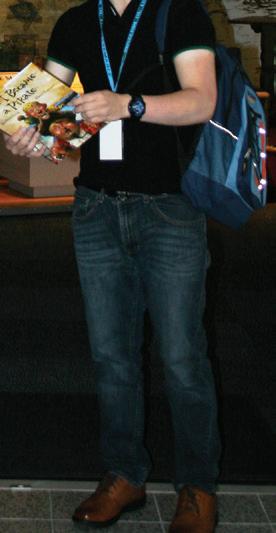
In May I was accepted into an internship, with funding from the State Employees’ Credit Union, that lasted until August 6. During this time, I assisted with research and condition reports in the collections department, worked on field trip projects in the education department, wrote newspaper articles, and performed many more tasks.
Because the MOA staff was so helpful, I developed professionally and personally as I gained a more insightful experience in preparation for my future career path. This internship gave me the resources I needed to refine my skills, both in the classroom and in the field.
One of several projects I worked on to help enhance the experience of our younger visitors.
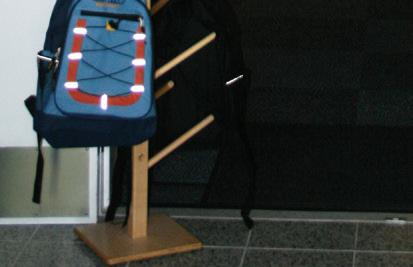


of Museum of the Albemarle
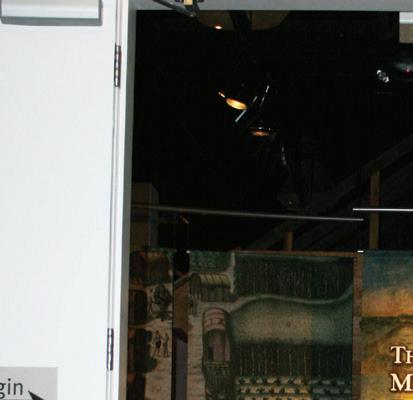 GALLERY BACKPACKS PROGRAM
GALLERY BACKPACKS PROGRAM
 by Tara Morrison, Junior Docent Coordinator
by Tara Morrison, Junior Docent Coordinator
I am excited to let you know that, because of your support, we have been able to grow the Junior Docent program from 5 young adults to 32 inspiring individuals. And, I am proud to say that 15 Junior Docents will be with us on a full-time basis and have set goals for themselves to dedicate more than a year of service.

I have learned in my experience through past work that young adults need encouragement, support, and belief in who they are. Providing those elements helps to make a difference in guiding each person into a successful future. Being able to work as the Junior Docent
coordinator this summer has given me the opportunity to see our young people’s willingness to make a difference. My hope is that this program continues to reach and enrich more and more young adults.

Image from exhibit, Law and Justice: e Supreme Court of North Carolina, 1819-2019 Courtesy of NC Museum of History
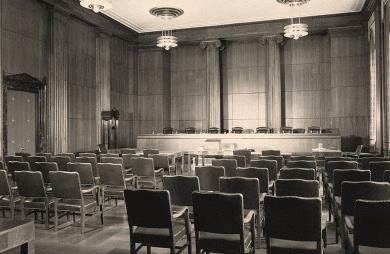
 By Don Pendergraft, Director of Regional Museums
By Don Pendergraft, Director of Regional Museums
QuiltSpeak: Uncovering Women’s Voices through Quilts
One Giant Leap: North Carolina and the Space Race
Toy Boom! Toys from the 1950s and 60s will open October 4th
Law and Justice: e Supreme Court of North Carolina, 1819-2019 opens November 14th
24th Annual America American Indian Heritage Celebration on November 23
19th Annual African American Cultural Celebration on Saturday, January 25, 2020
For more information about events and exhibits at the North Carolina Museum of History, visit ncmuseumofhistory.org.
Oktoberfest on Friday and Saturday, October 4 & 5, see the autumn leaves changing and experience mountain traditions influenced by German heritage at MGM.
Mountain Glory Festival-one of the regions oldest crafts shows on October 12. MGM will be on-hand with a booth and demonstrations in downtown Marion.
e North Carolina Mountain State Fair; September 6- 15, experience mountain culture and visit MGM’s display booth in Davis Events Center at Western North Carolina Agricultural Center and Fairgrounds in Fletcher, NC.
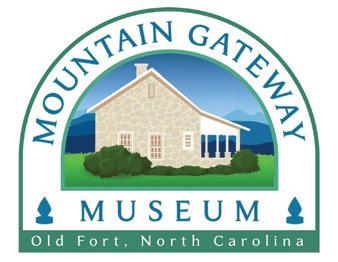
To kick-off the holiday season on Saturday, November 30, a Wreath Workshop using traditional grapevines is planned for MGM’s front porch. In December, a Christmas open house with cider and cookies.
In March, Only in Old Fort, a talent show, and fund-raiser sponsored by the Friends of the Mountain Gateway
with proceeds to benefit the museum’s programs. The event will be held in the Rockett Building on Main Street, time and date to be determined.
For more information about events and exhibits at the Mountain Gateway Museum, visit mgmnc.org

History Live! Four special events, examining the past through reenactments, artist demonstrations, musical performances in a live action theater. This fall; times and dates to be determined.
Festival of Yesteryear: Celebration of Early America on September 7 from 10-5pm in Arsenal Park, near the museum. This festival presents an immersive experience for visitors through arts and crafts, music with historians to provide information on daily living in the 18th century.
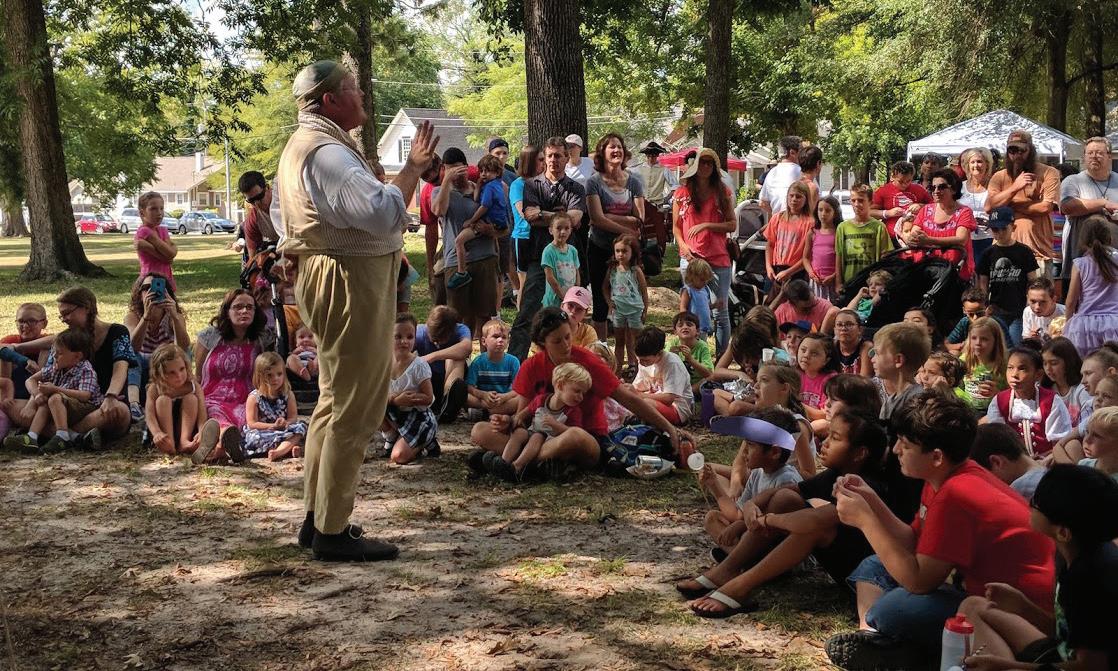

Hallowe’en Revels: Night Tours of the 1897 Poe House in partnership with the Gilbert eater, who perform a series of 20-minute acts based on Victorian cultural norms via poetry and music. The tours will be on the evenings of October 23 -25 and a $5 admission fee. Go to the museum’s website to register.
Trick or Treat at the Poe House; a fun and safe way to display your costumes, a contest for children age 12 years and under. Enjoy Victorian customs, a “raven” scavenger hunt, vintage carnival games, concert, and much more on October 26 from 11-4pm.
Holiday Jubilee at the 1897 Poe House, features the Coventry Carolers and the Cross Creek Chordmen to ring-in the season with music on the Poe’s porch. Santa Claus will be in the house for pictures and requests. This event features historic cooking, holiday crafts. The Poe House will be decorated in full holiday splendor. Please join us on December 8 from 1-5pm.
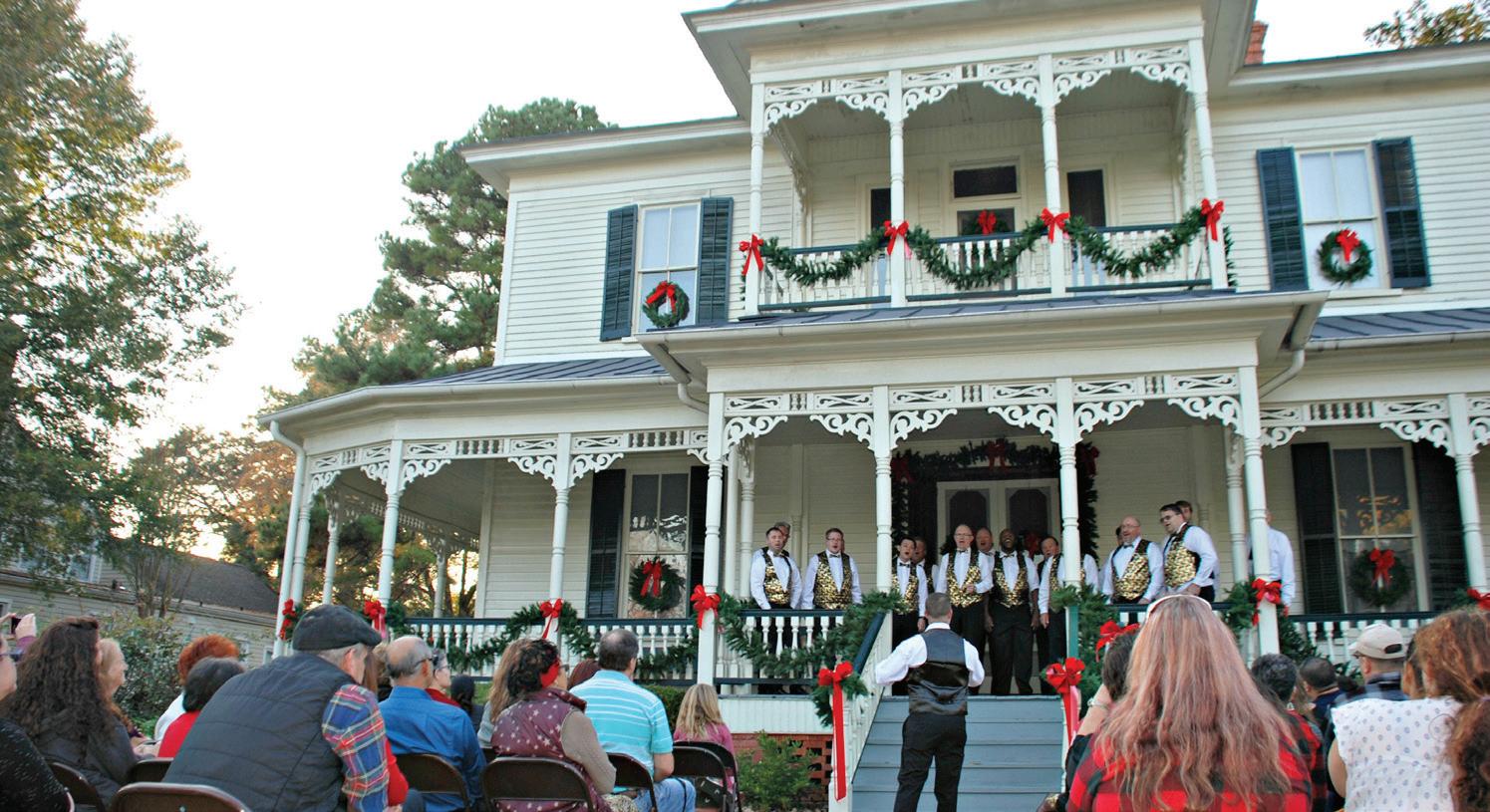
For more information about events and exhibits at the Museum of the Cape Fear Historical Complex, visit museumofthecapefear.ncdcr.gov

There have been many lumbermen in the storied history of logging, milling and forestry in the Albemarle region. Many of the early ports were named “shingle landing” after the split cypress shingles bundled, stacked and ready for market in Colonial times. The region was known for cypress, juniper and pine trees, found in virgin growth forests surrounded by water. They were sought by boat builders, house builders and furniture makers for the strong grains that could be fashioned into useful items. The tall trees stood for millennium until after the Civil War. The Union soldiers who occupied the region during the war made note of the great forests and a ready supply of wood. They returned to begin the work of timbering and bringing the trees to market in 1870s. The market held true well into the 1930s, when much of the original forests had been timbered-out & reforested.

It was in 1939, when a young man from Camden County began a small sawmill, north of Elizabeth City. Johnny Jones had moved around the country and returned to try his hand in a trade he knew well, sawmills. The Foreman, Kramers and Blades Mills with a multitude of others were also harvesting and milling lumber for local and international markets.
In an interview with J. Wilson Jones, Jr. he described his father’s mill as hard work, done by hand with 8-10 people working together. He remembers the days fondly and as a

great learning experience. He began helping his father turning tree trunks with a cant-hook on the yard at about thirteen years old. The operation was steam-driven with electricity still on the horizon. The Rural Electrification Act (REA) was delayed until after the Second World War. Jones was enrolled in gradeschool near South Mills with about seventy students of all ages and three teachers to provide reading, writing and arithmetic. He enjoyed playing sports and would later travel to attend high school in Elizabeth City High School. He went on to attend North Carolina State University and later graduated in Forestry, Manufacturing and Mercantile. He described the rapidly changing technology used to
 Left to Right. Stephen Jones, J. Wilson Jones, Jr., Wilson Jones, III. Courtesy of Timber Processing Magazine, Dec 2017
Left to Right. Stephen Jones, J. Wilson Jones, Jr., Wilson Jones, III. Courtesy of Timber Processing Magazine, Dec 2017
cure lumber with the adding of kiln drying equipment to help process and produce lumber for an ever-increasing market post WWII. The mill would also adopt automated and computer driven technology to help with the recording and production in the mill. The new technologies advanced the milling processes to ensure more lumber and less waste from every tree. He credits the success of the mills to the ingenuity of the employees, who steered the business through rough and prosperous times. The success can also be attributed to good forestry to replant and harvest trees as a renewable resource. Jones is a student of good practices in the lumber business and in the process purchased a chipping plant to use more parts of the tree. The mills operation also expanded by purchasing Mackey Ferry Mill in Roper, NC for milling hardwoods. I asked him, why he chose
the wood industry as his life’s work. His reply, I got sawdust in my shoes at an early age.
The two largest structures in the museum’s Our Story-The Story of the Albemarle, (the chronological gallery) the 1750s Jackson House and the 1840s Proctor Smokehouse were assembled using the original wood with parts reconstructed using wood donated by Jones’ mill. The museum’s Festival Portico and Stage is named for Mr. J.W. Jones, Jr. and Mrs. Margeret Jones. We are lucky to have the Jones as part of our museum family.
Today the company is run by their two sons, J. Wilson Jones, III and Stephen, the fifth generation of lumbermen in the business. They are



surrounded by a multitude of loyal employees, excuse the pun, who are engrained with a love for their work and sawdust in their shoes.
J. Wilson, Jr. and Margaret are retired, enjoying grand-children, and exploring life on the river.
MACKY FERRY MILL IN ROPER, NC Courtesy of Timber Processing Magazine, Dec 2017 by Dr. Benjamin F. Speller Jr. FOMOA President
by Dr. Benjamin F. Speller Jr. FOMOA President
Agrant received during the 2017–2018 fiscal year continues to support North Carolina Women and the Underground Railroad, the theme for MOA’s 50th Anniversary Symposium. The symposium was carried out under the leadership of Nancy Bailey Muller, vice president of Friends of the Museum of the Albemarle, and historian Wanda Hunt McLean. An extension of that grant, from the State of North Carolina through the North Carolina Department of Natural and Cultural Resources, during the 2018–2019 fiscal year allowed FOMOA to also support development of a 26-minute video, Northeastern North Carolina’s Underground Railroad.
Northeastern North Carolina’s Underground Railroad highlights the state’s unique role in the Underground Railroad, with a special look at the Great Dismal Swamp, Edenton in Chowan County, and Halifax County, and the many waterways that comprise the Maritime Underground Railroad. The film was produced by Angie Staheli, with guidance from local historians Muller and McLean, William J. McCrea, and Barbara Putnam, as well as several

individuals who provided conceptual, geographical, and historical context for the video: Carl Burke, site manager at Historic Halifax State Historic Site, Angela Thorpe, director of the North Carolina African American Heritage Commission, Dr. Adrienne Israel, professor emerita of history for Guilford College, Max L. Carter, director of the Friends Center at Guilford College, and Dr. Benjamin Speller, president of FOMOA. In addition, McLean also provided historical context for the Dismal Swamp as a pathway to freedom; Dr. David Cecelski described the role of waterways in eastern North Carolina as pathways to freedom and how Harriet Jacobs used them to escape enslavement; and Carol Shields, described what role the Roanoke River and its tributaries played as pathways.
The video ends with Speller observing that the publications of two northeastern North Carolina women - Harriet Jacobs of Edenton (Incidents in the Life of a Slave Girl) and Hannah Bond, or Hannah Crafts, of Bertie and Hertford Counties (The Bondwoman’s Narrative) - demonstrate that literate enslaved persons could communicate their own experiences of enslavement
very effectively.
We sincerely appreciate the vision and efforts of the following individuals that made this video production possible: Wanda Hunt McLean, an awardwinning public historian, who brought national recognition to northeastern North Carolina’s role in the Underground Railroad; historian Dr. David Cecelski, who has written several award-winning books and hundreds of articles about history, culture, and politics on the North Carolina coast; Carl Burke, who not only shared knowledge of Historic Halifax State Historic Site but also the Underground Railroad and the African American experience; Carol Shields, executive director, Roanoke River Underground Railroad Trail, a development initiative of Roanoke River Partners Inc.; and Angela Thorpe, director of the North Carolina African American Heritage Commission, who has provided statewide coordination with the National Underground Railroad Network to Freedom Project of the National Park Service.
Johnson Biggs
Veronica Brentjens
Gillian Hatch Carlsen
Gary Dunstan
Dr. Linda Fusco
Mimi Galgano
Reba Green-Holley
Linda Hofler
Norma Laughmiller
Daniel McAuliffe
Tim Orton
Dr. Leon Pringle
Dr. Charles Reed
Capt. Skip Riley, CMS
Barbara Snowden
Ethel Sutton
Mackey Swain
Emily Jennings White
Margaret Wilshusen
Sandra Culpepper
The Honorable Grafton Beaman
Betty Ingram
David Seymour
Arthur McPherson
Master Sergeant William Hoffman
Margene Curtice
W. Brian Forehand

Craig Winslow
Mable Jean Moore
Mae Heyer
Elouise White
Phyllis Timmerman
Donald & Miriam Alexander
Bill & Carol Allen
Kim & Jack Baumbaugh
Ron & Mary Black
Di Small & Neal Blinken
Linda & Shel Davis
Ed & Nancy Eadie
Vidal & Georgene Falcon
Bobby & Barbara Fitchett
Clay & Mary Ann Foreman
Mary Hadley Griffin
Russ & Margie Haddad
George Haislip
Patty & Alden Hoggard
Harriett & Tony Hornthal, Jr.
Eddie & Cindy Jennings
Carl & Pat Jennings
Sam & Janet Jones
Joyce & Justina Long
Morris & Norma-Hatot King
Alex & Sandra Leary
Bill & Edie McCrea
Rod & Barbara Mueller
Becky & Thomas Phelps
Thomas & Mary Ponte
Jack & Sarah Neal
Fred & Jan Riley
Flora Robinson
Julie & Harry Robinson
Anne Sanders
Linda & Waverly Sawyer
Marvyn Siders
Jeff & Suzan Small
Nona & Kevin Smith
Ginny Waff
Faye Ellen & Beans Weatherly
Gretchen Blacksmith
Jim & Patricia Britt
Dewey & Pat Burgess
Ray & Maureen Donnelly
Judy & Joe Evans
Archer & Janet Farmer
Sharon Greene
David & Jane Harris
Linda Hassell
Doris Hawkins
Kurt & Bobbi Hunsberger
Bren O’Sullivan & Joe Inqui
Sara Francis & Dr. Alexander Kehayes
Don & Mary Lee Kosik
George & Blair Jackson
Nedra & Carlton Lane
Sarah & John Pugh
Joyce Reitz
Mark & Stacy Small
Turner Sutton
Wayne & Dee Talley
George & Mary Thomas
Paul & Joyce Wheeler

Becky & Jimmy Harrell
Robert & Elana Muir
Hilton & Mary Leigh Barrett
Arthur & Patti Bergman
Anna & Bruce Biggs
Geoff & Penny Byrd
George Converse
Carol & Ed Cowell, Jr.
Sam & Faye Davis
Nancy Ferebee
Edwin & Diana D. Hardison
Flint & Janet Harding
James & Jackie Hathaway
Chad Hull
Maughan & Kay Hull
Russ & Courtney Hull
Dr. Karen Ray & Dr. John Hill
Buddy & Beverly Madrin
Cynthia & Joe Maestro
Dr. Charles & Brenda Mahaffey
Michael & Sherri McDaniel
Ed & Claudia Merrell, Jr.
Nancy Muller
William Parker, Jr.
Chris & Whitney Paullet
Dr. Anne Marie Radke
Tapp & Charlie Robinson
Matt & Breanne Scribner
Norman & Susan Scurria
Beverly Small
Dr. Benjamin Speller, Jr.
Marvin Stokely
Jim & Jo Thomas
Bob & Judy Thorne
Mary Tirak
Byrum Charitable Trust
Bill & Katherine Wassink
Jimmy & Mary Jo Westbrook
Barbara & Leo Wachter
Dorsey Harris
Joyce Lassiter
Jeanie Lefler









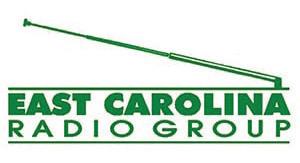

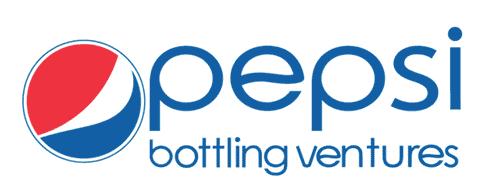
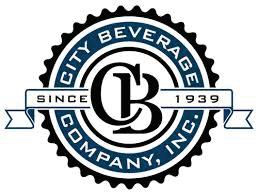
Museum of the Albemarle wishes to thank our sponsors and community partners. It is only through the generosity of businesses and individuals that the museum is able to continue to offer events that not only serve as fundraisers for the museum, but also allow the museum an opportunity to interpret a portion of our region’s history. All proceeds from benefit the Friends of the Museum of the Albemarle and its educational programs, exhibits, and artifact conservation.
The Friends of the Museum of the Albemarle (FOMOA) is a non-profit support group that seeks to raise awareness and provide funding for exhibits, educational programming, and artifact conservation throughout the thirteen (13) county region that we serve. The counties served are Bertie, Camden, Chowan, Currituck, Dare, Gates, Hertford, Hyde, Northampton, Pasquotank, Perquimans, Tyrrell, and Washington Counties. The Museum of the Albemarle is the recipient of all funds raised.


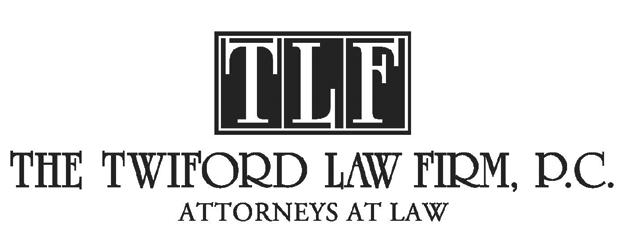
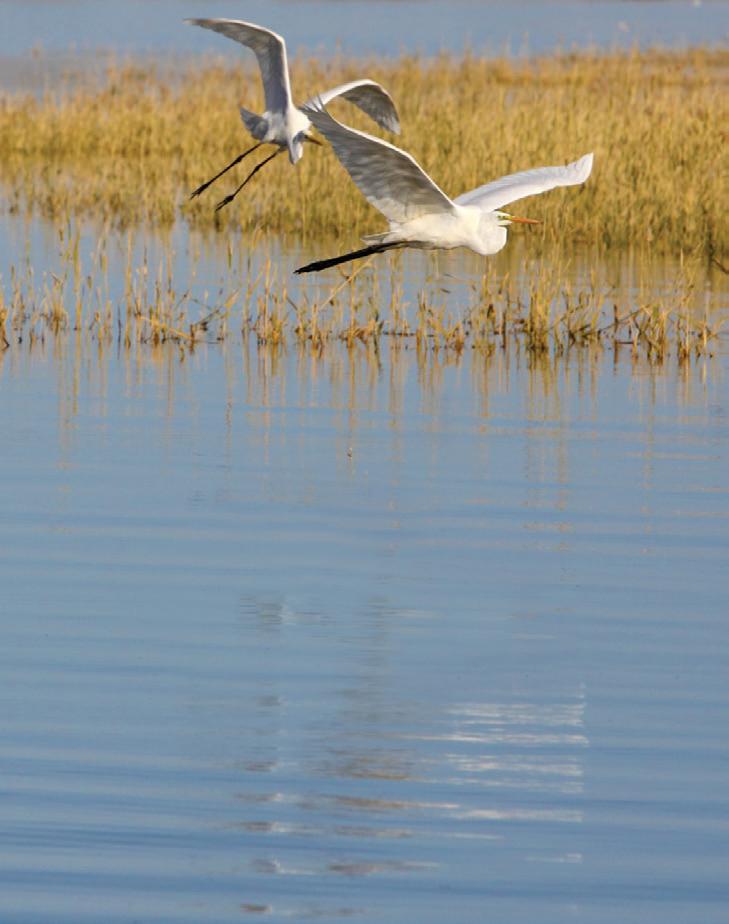
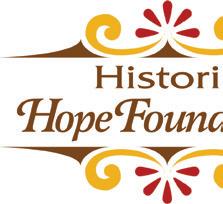
“Smell the sea and feel the sky. Let your soul and spirit fly.”
Make history a part of your special event.

Make your event an elegant affair.
With a variety of spaces available for rent and an attractive and convenient downtown Elizabeth City location, the museum is an ideal choice for almost any event; including business meeting, corporate dinners, community events, performances, wedding receptions, holiday parties, and family reunions.
For more information please call Rosana Castilho Event Rental Coordinator
(252) 335-1453

Sponsors
















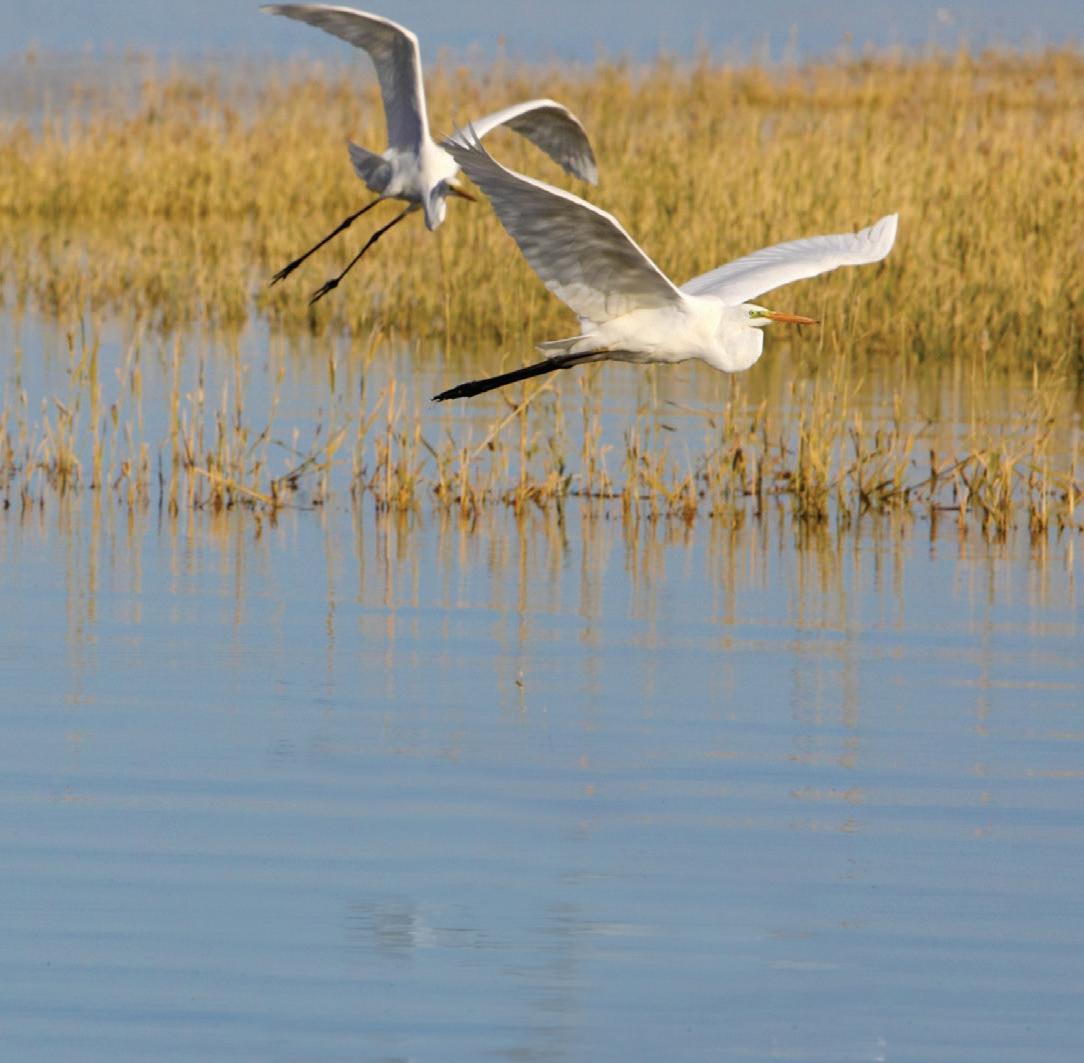



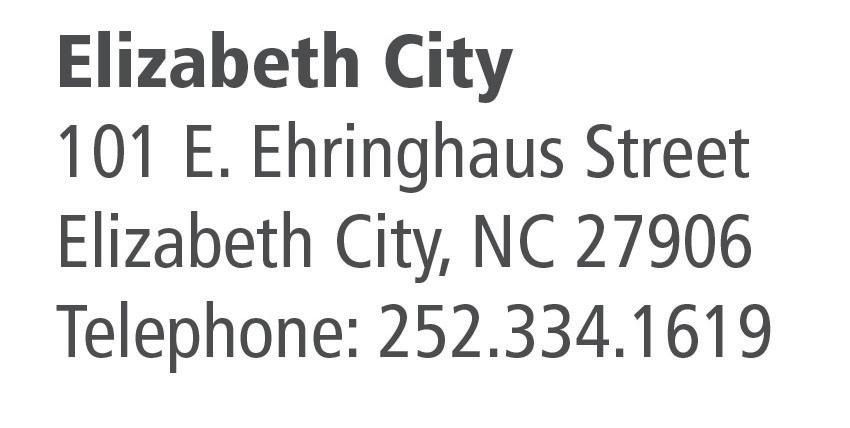




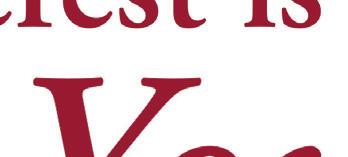
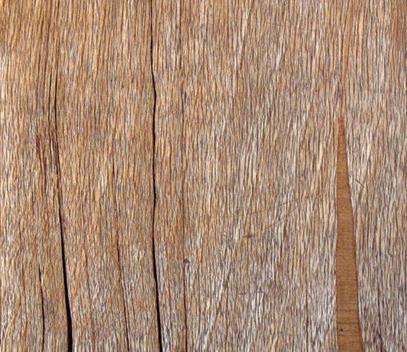





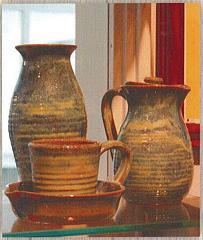



A long history of helping
A long history of helping
Build, Manage, & Transition Wealth
Build, Manage, & Transition Wealth
A long history of helping
A long history of helping
Build, Manage, & Transition Wealth
113 S. Water Street • Elizabeth City, NC 27909 (252) 338-5121 • Fax (252) 338-7568 • (800) 950-5121 www.whichardwoolard.wfadv.com
Build, Manage, & Transition Wealth
113 S. Water Street • Elizabeth City, NC 27909 (252) 338-5121 • Fax (252) 338-7568 • (800) 950-5121 www.whichardwoolard.wfadv.com
113 S. Water Street • Elizabeth City, NC 27909 (252) 338-5121 • Fax (252) 338-7568 • (800) 950-5121 www.whichardwoolard.wfadv.com
113 S. Water Street • Elizabeth City, NC 27909 (252) 338-5121 • Fax (252) 338-7568 • (800) 950-5121 www.whichardwoolard.wfadv.com


Wells Fargo Advisors is a trade name used by Wells Fargo Clearing Services, LLC, Member FINRA/SIPC
Wells Fargo Advisors is a trade name used by Wells Fargo Clearing Services, LLC, Member FINRA/SIPC
Wells Fargo Advisors is a trade name used by Wells Fargo Clearing Services, LLC, Member FINRA/SIPC
Wells Fargo Advisors is a trade name used by Wells Fargo Clearing Services, LLC, Member FINRA/SIPC



Sponsors

135 Hope House Lane, Windsor, NC 27938
135 Hope House Lane, Windsor, NC 27938
Historic Hope provides educational, cultural, and recreational benefits to the public as an element of the heritage of the RoanokeChowan region and as an illustration and interpretation of agrarian life in eastern North Carolina. We are excited about our ability to promote our heritage through special programs such as:
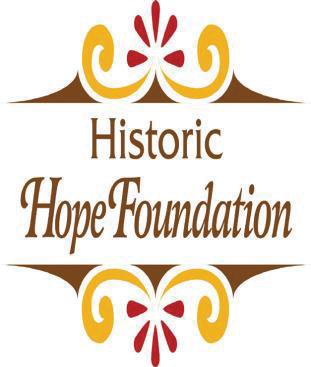

Historic Hope provides educational, cultural, and recreational benefits to the public as an element of the heritage of the Roanoke-Chowan region and as an illustration and interpretation of agrarian life in eastern North Carolina. We are excited about our ability to promote our heritage through special programs such as:
Historic Hope provides educational, cultural, and recreational benefits to the public as an element of the heritage of the Roanoke-Chowan region and as an illustration and interpretation of agrarian life in eastern North Carolina. We are excited about our ability to promote our heritage through special programs such as:


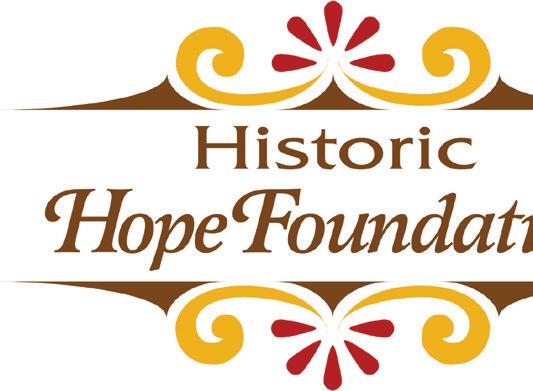
Living History Day - a program for all county 4th grade students.
Annual African American History Day Celebration.
• Living History Day - a program for all county 4th grade students.
• Living History Day - a program for all county 4th grade students.
Genealogical Conference - for exchanging information on former residents of Bertie County.

• Annual African American History Day Celebration
• Annual African American History Day Celebration
• Genealogical Conference - for exchanging information on former residents of Bertie County
• Genealogical Conference - for exchanging information on former residents of Bertie County
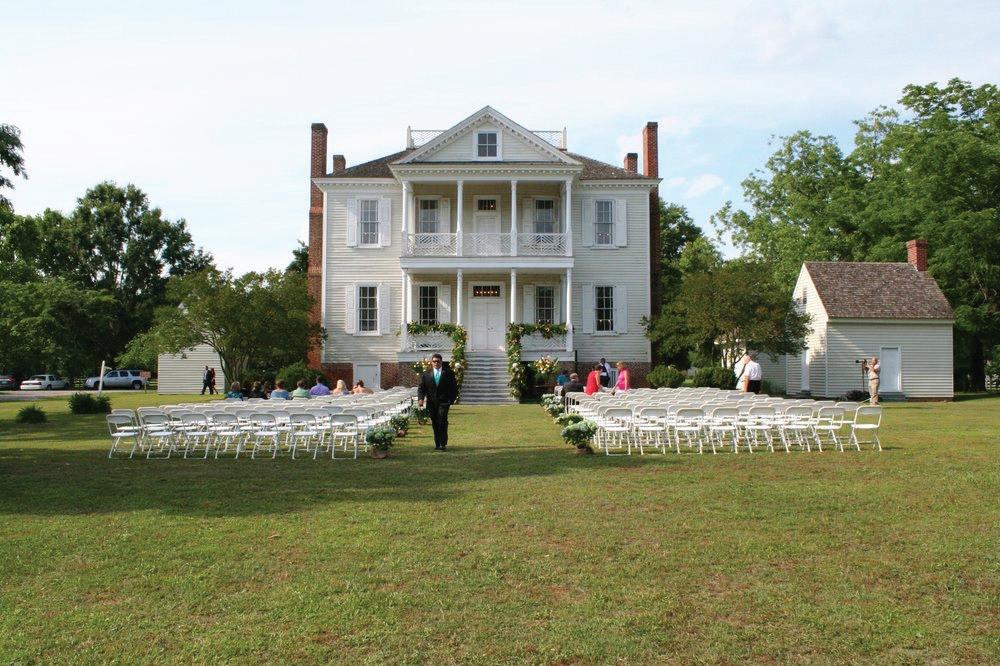
• Ives Lectures - which focus on elements of the decorative arts.
• Ives Lectures - which focus on elements of the decorative arts.
• “Plantation at the Crossroads” - a permanent exhibit highlighting diverse areas such as Tuscarora civilization, plantation agriculture, and African American life at the Plantation.
• “Plantation at the Crossroads” - a permanent exhibit highlighting diverse areas such as Tuscarora civilization, plantation agriculture, and African American life at the Plantation.
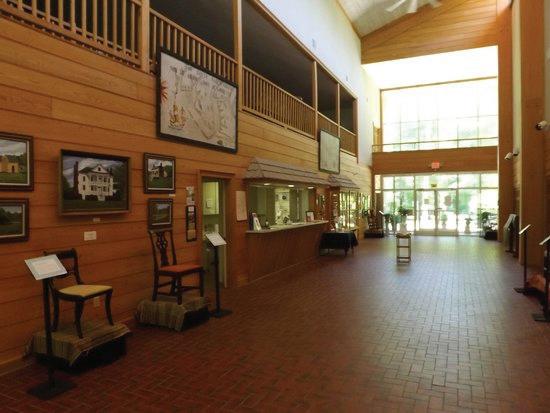
For information
For information
call 252-794-3140 or email info@hopeplantation.org
“Plantation at the Crossroads” - a permanent exhibit highlighting diverse areas as Tuscarora civilization, plantation agriculture, and African American life at the Plantation. For Information
call 252-794-3140 or email info@hopeplantation.org





